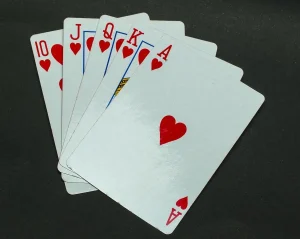Sustainable and Eco-Friendly Bingo Supplies and Practices: A Player’s Guide

Let’s be honest. When you think of a classic bingo hall, “eco-friendly” isn’t usually the first phrase that springs to mind. You picture paper cards, plastic daubers, and maybe even a whiff of stale air. But here’s the deal: the call for sustainability is reaching every corner of our lives, and the bingo community is no exception.

Honestly, it’s a shift that makes perfect sense. A game built on community and connection can also be built on principles that protect our shared planet. And the best part? Going green with your bingo night doesn’t mean sacrificing the fun. Not one bit. It’s about making smarter, more thoughtful choices.
Rethinking the Essentials: Your Bingo Kit Gets a Green Makeover
The heart of any bingo game lies in the supplies. This is where the most impactful changes can happen, honestly. Let’s break down the big three.
1. The Daubers: Ditching Single-Use Plastic
For decades, the cheap, single-use plastic dauber has been the undisputed king. But its reign is, well, problematic. These often end up in landfills after just one use. The good news? The market for eco-friendly bingo daubers is booming.
Look for:
- Refillable Daubers: These are the gold standard. They feature a durable, often metal or thick plastic body designed to last for years. You simply purchase refillable bingo ink bottles to top them up. It’s a no-brainer.
- Recycled Plastic Options: If you must go disposable, seek out brands that manufacture their daubers from post-consumer recycled plastic.
- Non-Toxic, Water-Based Inks: This is crucial. Many standard inks are petroleum-based. Choosing plant-based, non-toxic inks is better for the environment and for you—no more harsh chemical smells.
2. The Cards: Beyond Pulp and Paper
Paper cards get used once and tossed. It feels… wasteful. For casual home games, the most sustainable option is investing in reusable bingo cards. These are typically made of laminated cardboard or even a thin, wipe-clean plastic. You use dry-erase markers instead of daubers. They last for hundreds of games.
For larger halls or when disposable is the only option, the key is in the sourcing:
- Recycled Content: Insist on bingo cards and paper sheets made from 100% post-consumer recycled paper.
- FSC-Certified Paper: The Forest Stewardship Council logo ensures the paper comes from responsibly managed forests.
- Soy-Based Inks: Just like with daubers, ask your supplier if they use soy or vegetable-based inks for printing. These are far easier on the planet than their petroleum counterparts.
3. The Little Things That Add Up
Sustainability is in the details. Think about the prize table. Instead of mass-produced, plastic trinkets that break, consider eco-friendly bingo prizes. We’re talking about gifts with purpose:
- Reusable tote bags and water bottles.
- Potted plants or seed packets.
- Gift cards to local, sustainable businesses.
- Products made from natural materials like bamboo, hemp, or organic cotton.
And what about the callers? Ditch the plastic bingo balls for a high-quality digital bingo number generator displayed on a screen. It’s a one-time investment that eliminates physical wear-and-tear and waste entirely.
Greening the Game: Sustainable Bingo Practices for Halls and Homes
Supplies are one thing. But the real magic—the real impact—happens in the daily practices. This is where community effort shines.
Waste Not, Want Not: A Zero-Waste Mindset
The goal here is simple: keep as much out of the landfill as possible. Set up clearly marked recycling stations for paper, plastic, and any other recyclables. But go a step further. Compost those used paper cups and napkins from the snack bar. It’s easier than you think.
For refreshments, ban single-use plastics. Offer ceramic mugs for coffee, use real cutlery, and provide water dispensers instead of individual plastic bottles. It creates a nicer, more communal atmosphere, too. You know, it feels more like home.
Energy and Atmosphere
If you’re running a bingo hall, energy consumption is a major factor. A simple switch to LED lighting can drastically cut your carbon footprint and your electricity bill. It’s a win-win. And, well, consider your venue’s temperature. Optimizing heating and cooling systems—maybe even using smart thermostats—prevents energy waste.
For home games, open a window instead of cranking the AC. Use natural light during the day. These small, almost effortless habits make a collective difference.
The Bigger Picture: Why This All Matters
You might be thinking, “It’s just a game of bingo.” But is it? Every product we buy, every item we throw away, sends a message. Choosing sustainable bingo supplies tells manufacturers that we value durability over disposability. It supports companies that are trying to do better.
Adopting eco-friendly practices for bingo nights strengthens the community bond. It shows a shared commitment to something larger than the game itself. It’s about stewardship. It’s about ensuring that the halls we love, and the planet we live on, are vibrant and healthy for all the games yet to come.
So the next time you shout “Bingo!”, take a second to look at your card, your dauber, the room around you. Imagine the small, simple shifts. They’re not a burden. They’re the next mark on the card—a mark for a greener future, one number at a time.






